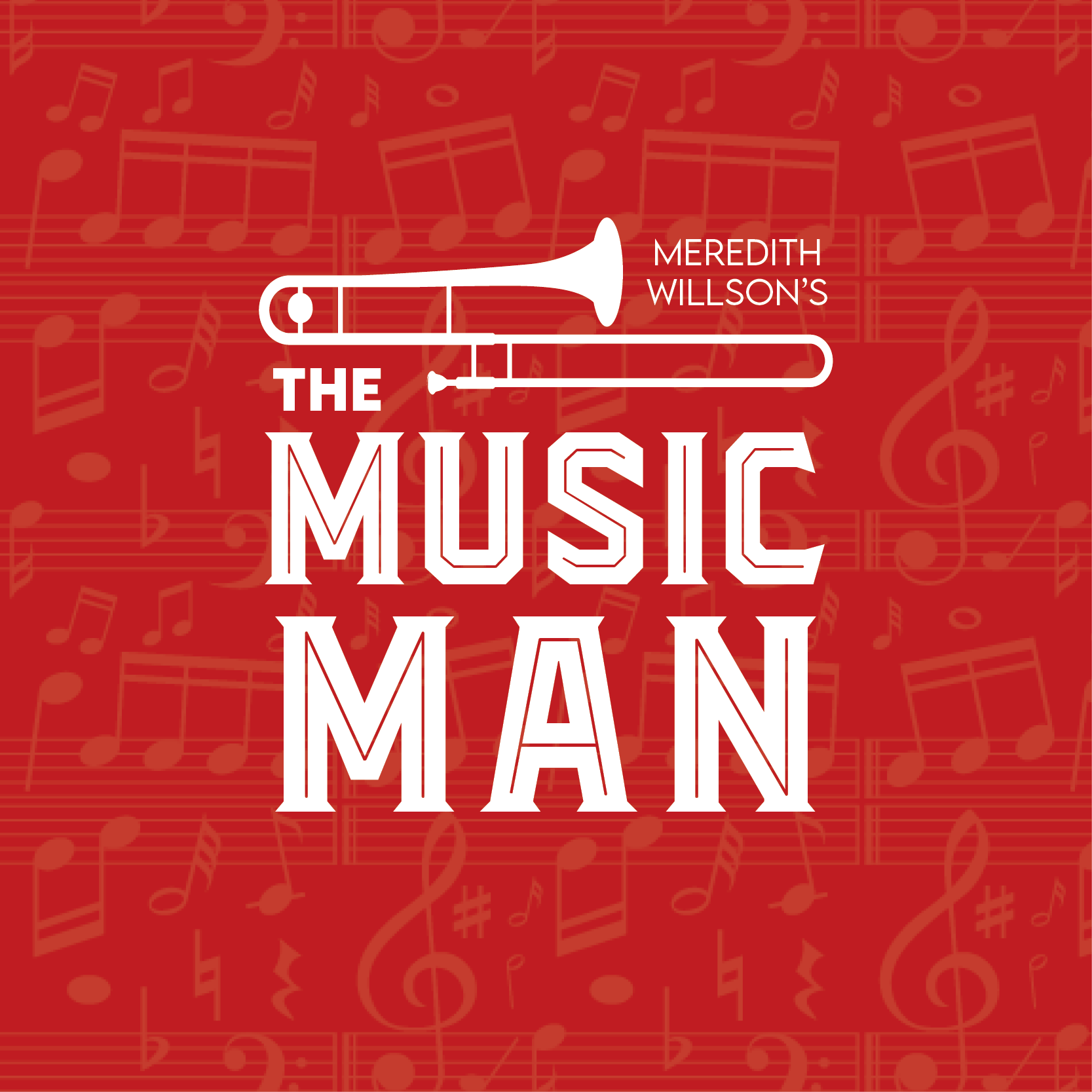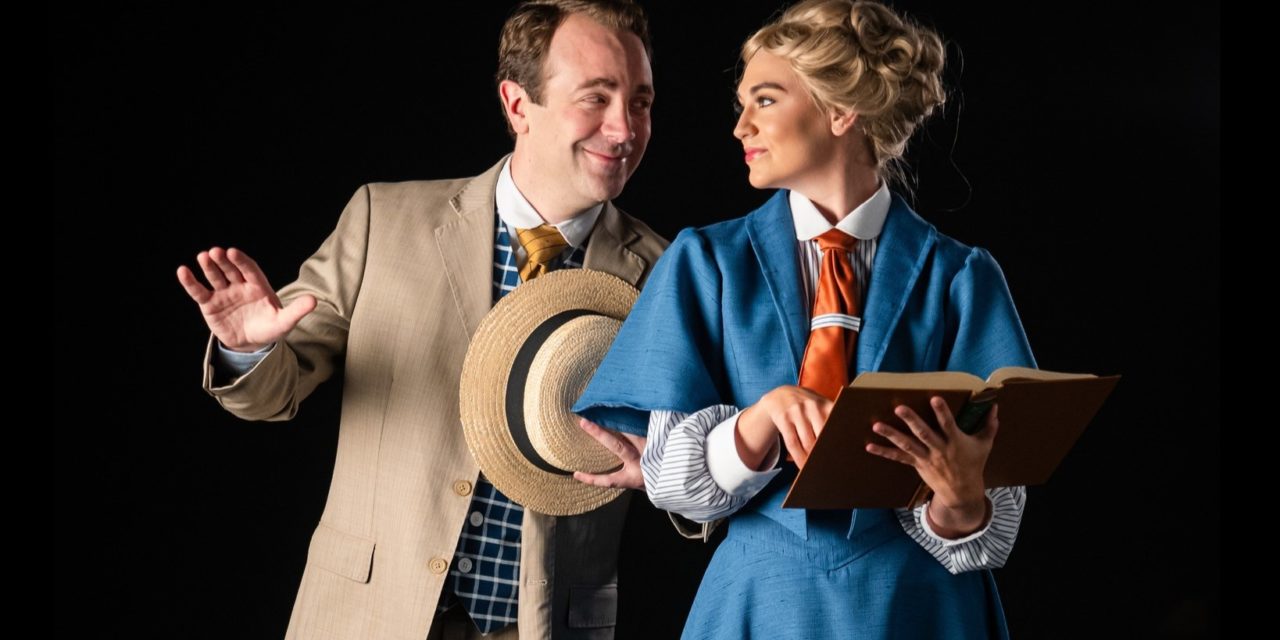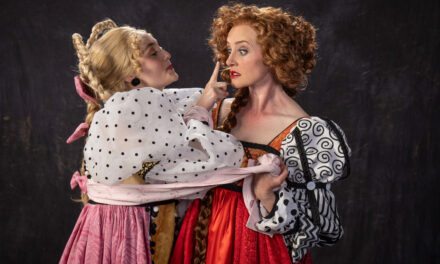SANDY — Certain plays are so iconic that as a critic, I arrive asking myself, “What is left to be said about this show?” The Music Man, first premiered in 1957 on Broadway (with book, music and lyrics by Meredith Wilson) is this kind of musical. I even reviewed it last month for UTBA. Fortunately a classic is a classic for a reason, and there is always something new to mine from a wonderful story. The latest production of this musical, from Sandy Arts Guild, is a boisterous telling of The Music Man that is sure to please audiences of all ages.

Show closes August 19, 2023.
The most impressive part of this lovely piece of community theatre is the massive size of the cast. Director David Hansen fills the large Theater at Mount Jordan hall with 48 cast members. Coordinating so many people is not easy, and yet the vivacious group dance numbers choreographed by Reagan Stott such as “Shipoopi” and “76 Trombones” were a joy to watch (despite the outdated lyrics for “Shipoopi” and “The Sadder but Wiser Girl”).
I also always appreciate when the lead in The Music Man can bring out the nerdy energy of Harold Hill. He is not just a sleek salesman, but can recite the great flugelhorn players off the top of his head and nearly convince a man who only has daughters to buy the instrument for his nonexistent son. Harold Hill lacks any kind of self-awareness until the end, but he is also a true band geek living vicariously through the persona of the professor he has created. Jared Saunders brings this energy to his performance, and it was unique and endearing. He kind of had a Nathan Lane energy, and I couldn’t help but think if they ever stage The Producers nearby, he would be an excellent Max Bialystock.
Morgan Hekking brings the classical vocals needed for Marion, but there were times when her vibrato and large acting choices felt like they were in a more cabaret style production than a simple staging of The Music Man. I also found the costumes given to her by designer Chad McBride to be interesting. For the first half, she is given a stiff blue suit with a orange tie and even in the romantic “Till there was You” section she has a white structured dress with blue trim that was not a romantic, flowing dress I typically see in this show. It is a different and refreshing visual choice that helps differentiate this production from others the audience may have seen. Also, Mikenzie McIntyre and Morgan Walker make for energetic Zaneeta Shin and Tommy Djilas who could execute the complicated choreography with youthful ease.
The rest of the costumes for the very large cast are excellent, down to appropriate footwear and hats. I was also impressed with the large detailed sets by Robyn Rausher-Fellows. It starts with the imposing train for “Rock Island” and then morphs into River City with a painted backdrop and other town landmarks, including a massive inside and outside of the Paroo house and a wonderful setup for the “Marion the Library” sequence. One treat was the fabric background for the library, with bookcases and a painting of Miser Madison on the wall. This attention to detail adds to the character of the piece and song. I also loved in that sequence how the teens tap-danced on top of the library tables. However, I was surprised —given the scale of the sets throughout the production — that Rausher-Fellows did not create a wagon for “The Wells Fargo Wagon.” Instead, she went to the effort to create the massive Shinn home for barely one scene when the wagon might have had more impact. Still, the sets in general were very impressive.
Another standout in Sandy’s production of The Music Man is in the barbershop quartet numbers. These songs can be a weak spot in most local productions, but all four men in the Sandy Arts Guild production harmonized well together. Thanks to this, My favorite number for them is the beautiful number (sung with Marian) “Lida Rose & Will I Ever Tell You?” And prolific local actor Jim Dale was a treat in a role as one of the singing school board members Olin Britt.
The most important part of The Music Man is capturing the community spirit of the show, and the staging in Sandy has this in spades. One cannot help but smile at the boisterous musical numbers and the great time everyone seems to be having. It is also rewarding to see the story of a conman who comes to realize what actually matters in life and who for the first time gets his “foot caught in the door.” Through learning to love another, Harold Hill is redeemed and becomes the man leading the band he so sells the town on at the beginning of the show. Like I said, The Music Man is a classic of American theatre for a reason, and the production in Sandy is a delightful reminder of its heralded status.

These reviews are made possible by a grant from the Salt Lake County Zoo, Arts, and Parks program.





